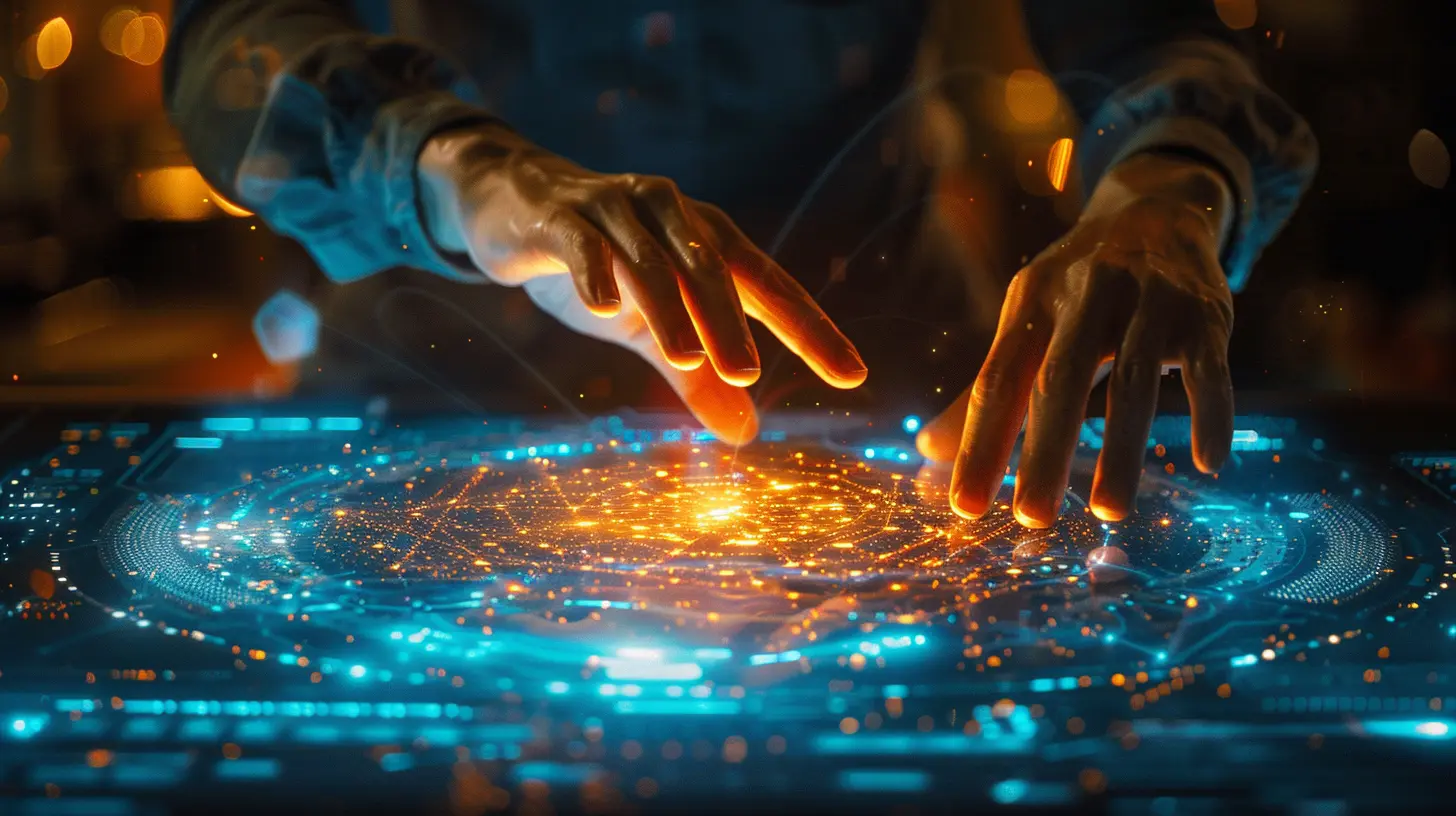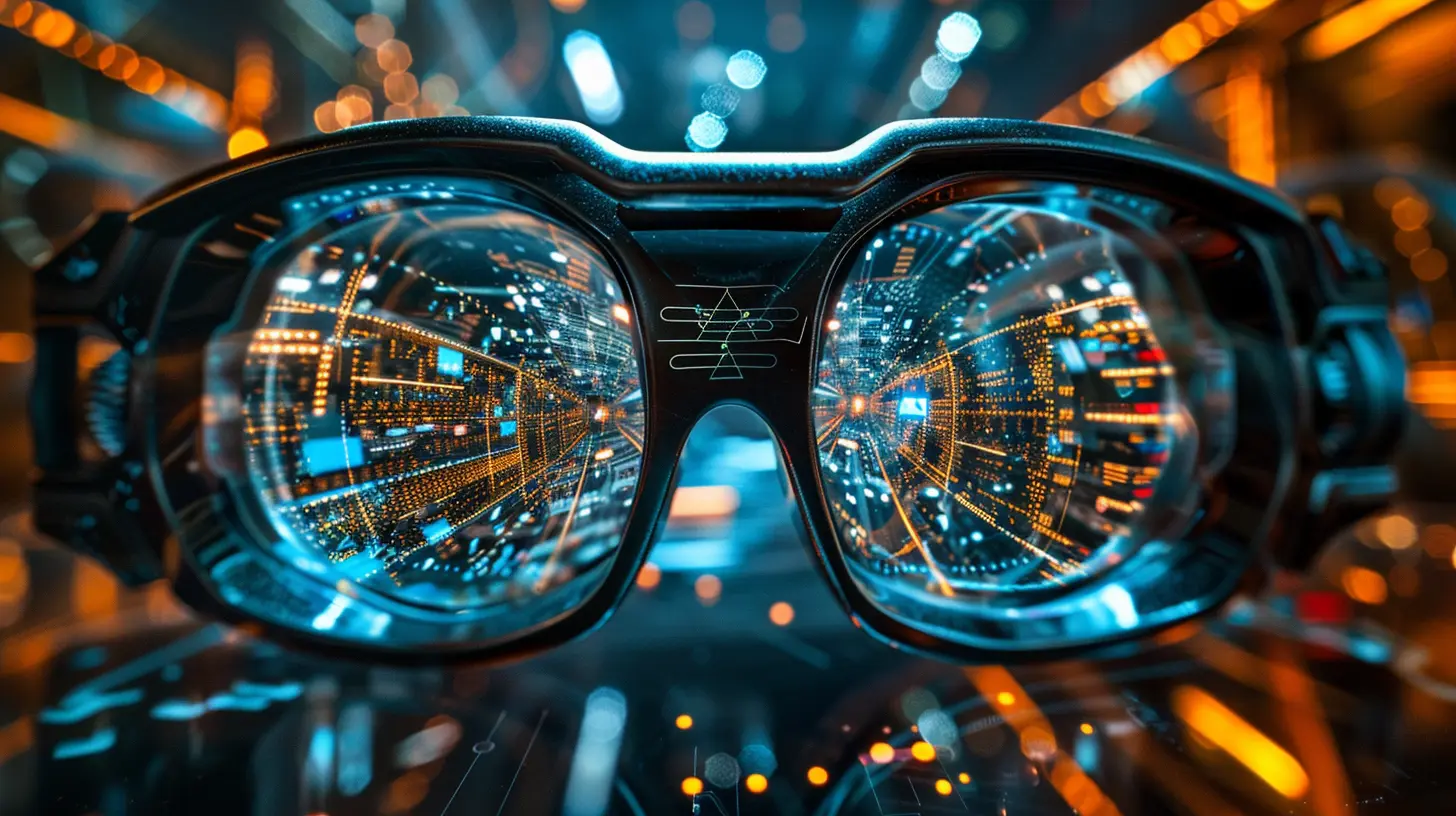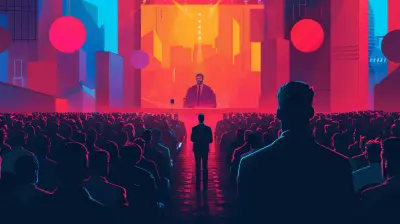Understanding the Potential of Holographic Displays
28 July 2025
Imagine watching your favorite movie or playing a video game and the characters literally pop out of your screen, standing right there in your living room. Sounds like a sci-fi dream, right? Well, welcome to the mind-blowing world of holographic displays—where 3D visuals without glasses are slowly turning into our everyday reality.
We’re not just talking special effects in movies or futuristic tech from Iron Man’s lab. Holographic displays are real, they’re evolving fast, and they’re set to massively change the way we interact with digital content. So, let’s buckle up and take a deep dive into this rad piece of tech.
What Are Holographic Displays Anyway?
Alright, let’s break it down—holographic displays are screens that produce three-dimensional images by manipulating light. Unlike your regular flat screens that show 2D images, these bad boys create visuals that seem to float in space. You can walk around them and see different angles, just like you would with a real object.But hold on a second. It’s not like your TV suddenly grows depth. Instead, holographic displays use tech like laser interference, diffraction, and light field projection to trick your eyes into seeing real 3D without needing special goggles.
Pretty mind-blowing, right?
A Brief History of Holography
Let’s rewind for a second. The concept of holography isn't exactly new. Hungarian-British physicist Dennis Gabor invented it way back in 1947 (bet you didn’t see that coming). It took a few decades for tech to catch up—thank you, lasers—and by the '60s and '70s, we had static holograms.Fast-forward to today, we’re talking full-on dynamic holographic displays that respond in real-time.
We're finally entering the era where science fiction becomes science fact.
How Do Holographic Displays Work?
Okay, time for some nerdy goodness.There are different methods to create holographic displays, but they all aim to do basically one thing: trick your brain into seeing depth where there isn’t any. Here's a quick breakdown of the top methods:
1. Light Field Displays
These use a complex array of micro-lenses or projectors to recreate the light rays that come off a real-world object. The result? A high-res, totally viewable 3D image—no glasses required.2. Laser Plasma Displays
This method actually ionizes air molecules using lasers to produce light points (voxels) in thin air. Yes, this is the closest thing to a Star Wars hologram we’ve got.3. Digital Holography
Here, a computer calculates the interference pattern of light from a 3D object and displays it using spatial light modulators. Long story short: it lets us update and change holograms in real-time.4. Pepper’s Ghost Illusion
Not quite a real hologram, but still used a lot—especially in things like stage performances or museum exhibits. It uses angles and reflections to create a 3D illusion using 2D images.Freaking cool, right?
Where Are Holographic Displays Being Used?
Holographic tech isn’t just eye candy. It's already being explored and used across a bunch of industries. Check out some of these real-world applications:1. Medical and Healthcare
Surgeons are starting to use holographic imaging for planning complex procedures. Visualizing organs in 3D before they even make a cut? That’s a game changer.2. Education and Training
3D models make learning way more interactive. Imagine learning anatomy or architecture with full 360-degree holograms instead of flat diagrams.3. Gaming and Entertainment
This is the obvious one. Imagine Pokémon Go with actual 3D Pokémon in your room. Gamers would lose their minds—in a good way.4. Retail and Advertising
Holographic product displays are catching attention at stores and events. Why hand out brochures when your product can speak for itself—literally?5. Military and Defense
Tactical 3D maps and training simulations are being boosted big time with holographic tech. When situational awareness is life or death, this matters.6. Telecommunication
Holographic video calls might just become the next big thing. Say goodbye to Zoom fatigue—imagine chatting with a friend and seeing them as a lifelike 3D projection.Challenges Holding Holographic Tech Back
As cool as all this sounds, we’re not quite living in a full-blown holographic future. Yet.There are a few speed bumps in the road:
1. Cost
This tech isn’t cheap. Producing and maintaining it takes a lot of expensive components and high-resolution data handling.2. Processing Power
Displaying real-time 3D visuals eats up a ton of computing power. Many systems just can’t handle it yet on a consumer scale.3. Content Creation
Creating holographic content is a complex task. Think of it like making a movie, but in 3D space. It takes time, skill, and specialized tools.4. Standardization
There’s no universal standard for holographic tech yet. That means fragmentation and compatibility issues… not fun.The Bright Future Ahead
Here’s the exciting part: despite the hurdles, we’re moving fast.Big names like Microsoft (with their HoloLens), Looking Glass Factory, and Leia Inc. are investing heavily into making holographic displays part of our daily lives. Even Apple is rumored to have a foot in the door with AR and spatial display tech.
Not to mention, the rise of AI and 5G are key enablers. Faster data speeds and smarter systems mean smoother, more lifelike holographic experiences.
Let’s take a peek at what might be just around the corner:
1. Holographic Smartphones
Yep, we may soon be holding phones that project 3D displays into thin air. Several prototypes already exist.2. Virtual Workspaces
Why settle for Zoom windows when your coworkers could be “in” your room via hologram? Remote work might never be the same again.3. Immersive Shopping
Online shopping with 3D holograms of products you can rotate and zoom in on? That could be the new norm.Why Should You Care?
You might be thinking, “Okay, this is all cool, but why should I really care?”Simple—holographic displays are going to change how we interact with technology. And that means better communication, richer entertainment experiences, deeper learning, and maybe even a more connected world.
Think about it—TVs replaced radios, smartphones replaced landlines, and now holographic displays might just be the next great shift in how we see and experience digital content.
So, the next time someone talks about “the future of displays,” you’ll know they’re not just blowing smoke. Holography is real, it’s coming, and it’s going to be wild.
Final Thoughts
Holographic displays are one of those breakthroughs that sound like magic until you dive into the tech and realize it’s a perfect storm of science, engineering, and imagination. From medicine to gaming, the potential is endless—and while there are still kinks to sort out, the direction is crystal clear.So, keep your eyes peeled. The screens and displays we grew up with are about to get a seriously cool upgrade. And trust me—you’re going to want front-row seats for this one.
all images in this post were generated using AI tools
Category:
Emerging TechnologiesAuthor:

Kira Sanders
Discussion
rate this article
2 comments
Reid Reed
Holographic displays promise to revolutionize visual experiences, enhancing fields like gaming, education, and healthcare by offering immersive, interactive environments.
November 16, 2025 at 4:26 AM

Kira Sanders
Thank you for your insightful comment! I completely agree—holographic displays indeed have the potential to transform various fields by creating truly immersive experiences.
Orionis McGuffey
Holographic displays represent a significant advancement in visual technology, offering immersive experiences across various applications. Their potential ranges from entertainment to education, emphasizing the need for further exploration and investment in this innovative field.
July 31, 2025 at 12:38 PM

Kira Sanders
Thank you for your insightful comment! I agree that holographic displays hold immense potential across multiple sectors, and further exploration can unlock exciting possibilities.


